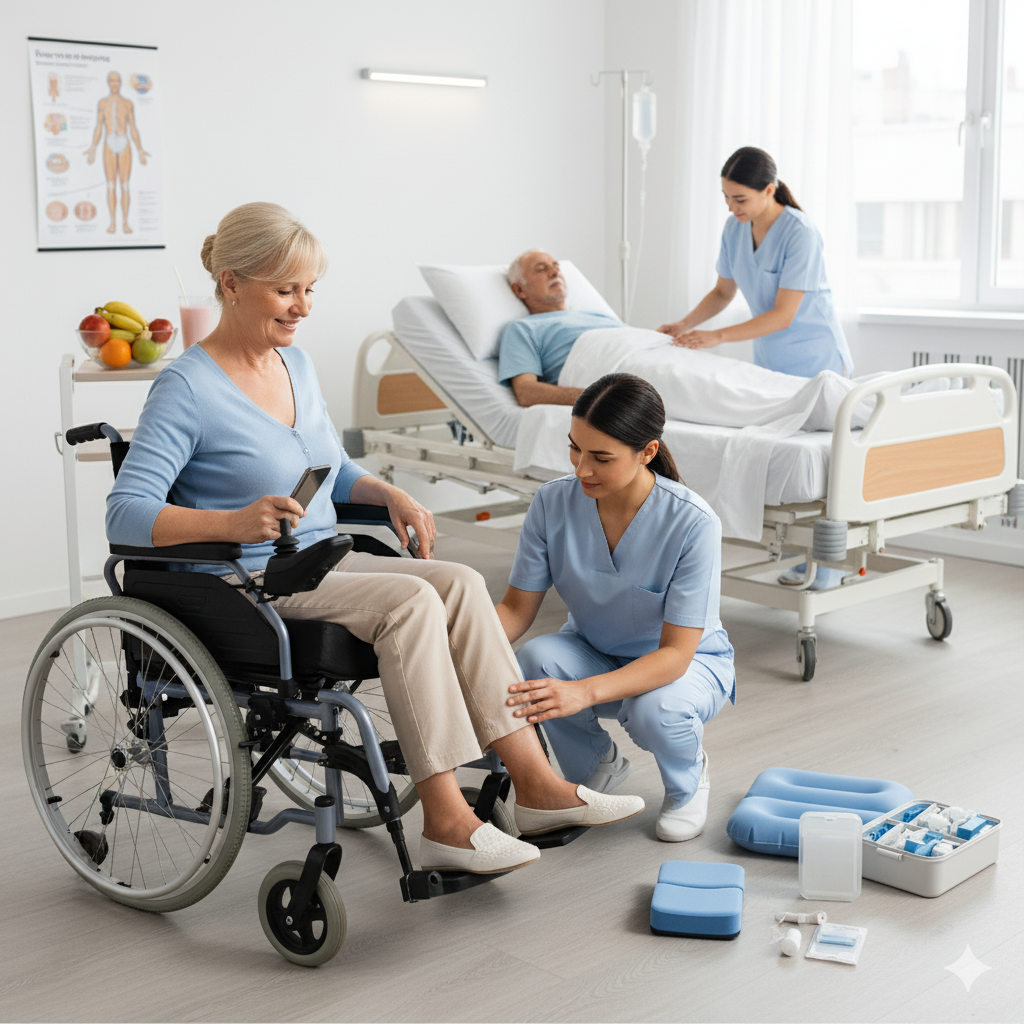How to Prevent Pressure Sores When Using a Wheelchair or Hospital Bed
For individuals who spend extended time in a wheelchair or hospital bed, pressure sores (also known as bedsores or pressure ulcers) are a serious concern. They form when prolonged pressure cuts off blood supply to the skin, leading to painful wounds. Fortunately, with proper care, most pressure sores can be prevented.
If you’re also deciding on which type of wheelchair to use, our guide on manual vs. electric wheelchairs can help you understand how different models impact comfort and skin health.
What Causes Pressure Sores?
Pressure sores usually develop on bony areas such as the tailbone, hips, heels, or shoulders. Common causes include:
- Staying in one position too long
- Friction from moving incorrectly
- Poor circulation
- Inadequate cushioning or support
- Lack of regular cleaning and maintenance of equipment
Early Warning Signs
- Red or discolored skin that doesn’t fade
- Warmth or swelling in certain areas
- Tenderness or pain
- Blisters or open wounds in advanced cases
Prevention Strategies
- Proper Cushioning
- Invest in high-quality wheelchair cushions and hospital bed mattresses designed to relieve pressure. Gel or air-filled cushions distribute weight evenly.
- Repositioning Regularly
- Wheelchair users should shift positions every 15–30 minutes.
- Bedridden patients should be repositioned every 2 hours.
- Hygiene and Skin Care
- Keep skin clean and dry.
- Use mild cleansers and apply protective creams.
- Change underpads or sheets frequently.
- Good Nutrition & Hydration
- A healthy diet promotes skin integrity and healing. Adequate protein and hydration are essential.
- Equipment Maintenance
- Regularly inspect wheelchairs, cushions, and hospital beds. For tips, check our guide on how to clean and maintain medical equipment at home to avoid bacteria buildup and discomfort.
Caregiver Tips
- Keep a daily log of skin checks.
- Learn safe transfer techniques to avoid friction.
- Use mobility aids like lifting devices when needed.
When to Seek Medical Help
If a sore develops into an open wound, consult a doctor immediately. Severe cases may require wound care specialists or hospitalization.
Conclusion
Preventing pressure sores requires a combination of good equipment, regular repositioning, proper hygiene, and caregiver awareness.
If you’re comparing wheelchairs, check out our article on manual vs. electric wheelchairs to see how your choice can impact long-term comfort and skin health.




